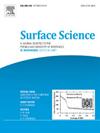Regulating the redox of a bimetallic catalyst for synchronous enhancement of acrylonitrile conversion and N2 selectivity
IF 1.8
4区 化学
Q3 CHEMISTRY, PHYSICAL
引用次数: 0
Abstract
A key problem of the catalytic oxidisation of nitrogen-containing volatile organic compounds (NVOCs) is to regulate the redox property of the catalyst. A too low oxidability results in low conversion; however, a too high oxidability produces undesired by-products such as N2O and NOx. In this study, Ce, Cu, Mn and V were loaded on TiO2 and applied in the catalytic oxidisation of acrylonitrile. Results revealed that Ce-doped TiO2 simultaneously showed better conversion (99 %) and N2 selectivity (95.3 %) than the other catalysts at 210 °C. However, the high selectivity was swiftly decreased to 74.5 % at 240 °C. After co-doping of Cu, the high selectivity was maintained above 89.8 % within 210 °C–270 °C. Meanwhile, catalytic conversions were close to 100 %. These ensured a stable catalytic performance even when the catalytic temperature was unusually high due to NVOC catalytic burning. Surface chemistry analyses showed that the redox potential of Ce-doped TiO2 was restrained after Cu doping, thus resulting in stable high N2 selectivity. This study presents a successful example of redox regulation by combining transition metals with different oxidabilities, which would develop more suitable catalysts for pollutants with unique catalytic requirements.

调控双金属催化剂氧化还原同步提高丙烯腈转化率和N2选择性
含氮挥发性有机物(NVOCs)催化氧化的关键问题是调节催化剂的氧化还原性能。氧化性过低导致转化率低;然而,过高的氧化性会产生不需要的副产物,如N2O和NOx。本研究将Ce、Cu、Mn和V负载在TiO2上,应用于丙烯腈的催化氧化。结果表明,在210℃条件下,ce掺杂TiO2同时表现出较好的转化率(99%)和N2选择性(95.3%)。然而,在240°C时,高选择性迅速下降到74.5%。共掺杂Cu后,在210℃~ 270℃范围内,选择性保持在89.8%以上。同时,催化转化率接近100%。这确保了稳定的催化性能,即使催化温度异常高,由于NVOC催化燃烧。表面化学分析表明,Cu掺杂后ce掺杂TiO2的氧化还原电位受到抑制,从而获得稳定的高N2选择性。本研究为过渡金属与不同氧化性相结合进行氧化还原调控提供了一个成功的例子,这将为具有独特催化要求的污染物开发出更合适的催化剂。
本文章由计算机程序翻译,如有差异,请以英文原文为准。
求助全文
约1分钟内获得全文
求助全文
来源期刊

Surface Science
化学-物理:凝聚态物理
CiteScore
3.30
自引率
5.30%
发文量
137
审稿时长
25 days
期刊介绍:
Surface Science is devoted to elucidating the fundamental aspects of chemistry and physics occurring at a wide range of surfaces and interfaces and to disseminating this knowledge fast. The journal welcomes a broad spectrum of topics, including but not limited to:
• model systems (e.g. in Ultra High Vacuum) under well-controlled reactive conditions
• nanoscale science and engineering, including manipulation of matter at the atomic/molecular scale and assembly phenomena
• reactivity of surfaces as related to various applied areas including heterogeneous catalysis, chemistry at electrified interfaces, and semiconductors functionalization
• phenomena at interfaces relevant to energy storage and conversion, and fuels production and utilization
• surface reactivity for environmental protection and pollution remediation
• interactions at surfaces of soft matter, including polymers and biomaterials.
Both experimental and theoretical work, including modeling, is within the scope of the journal. Work published in Surface Science reaches a wide readership, from chemistry and physics to biology and materials science and engineering, providing an excellent forum for cross-fertilization of ideas and broad dissemination of scientific discoveries.
 求助内容:
求助内容: 应助结果提醒方式:
应助结果提醒方式:


